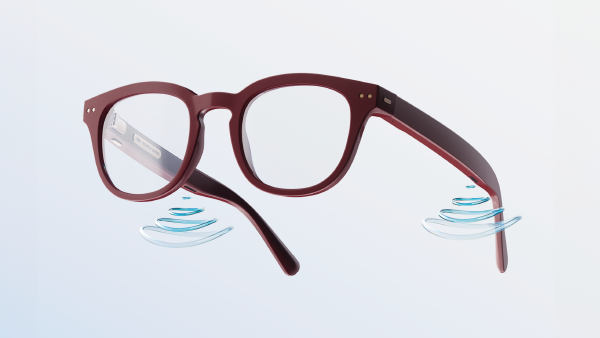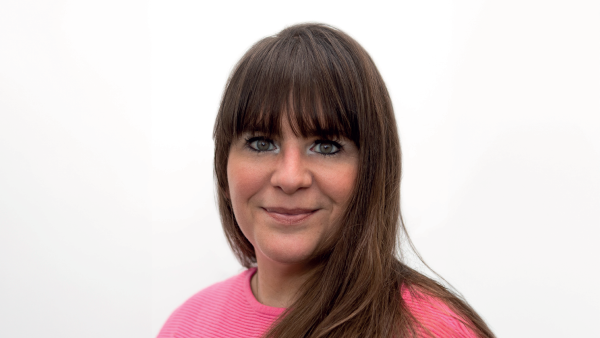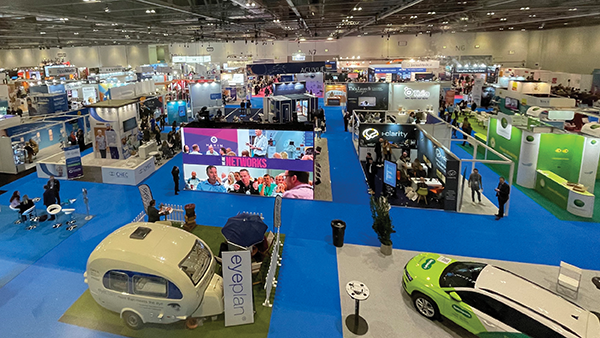Managing Dry Eye from the First Contact Lens Fitting
Thinking ahead to potential discomfort helps patients stay happier, longer, writes Kaleb Abbott
Most contact lens wearers who visit me at the University of Colorado Dry Eye Clinic appreciate the freedom, aesthetics, and clear vision that contact lenses provide. However, many have still had to discontinue their use. Their experiences are all too familiar – dryness, grittiness, inflammation, and fluctuating vision while wearing contacts (1). Despite frequent use of lubricating eye drops, they find little relief. Over time, their contact lens wear time diminishes to the point where wearing them is no longer practical, leaving them reliant on eyeglasses they would rather avoid.
In our dry eye clinic, our goal is to help contact lens wearers manage dry eye disease (DED) and improve their comfort – even in Colorado’s dry climate – allowing them to extend their wear time. Here’s how I approach it, and how you can support your patients by integrating DED management into their contact lens care.
When contacts aren’t working
Many patients seek freedom from glasses for comfort, convenience, or aesthetic reasons, but they may not be candidates for LASIK or PRK due to medical or financial limitations, making contact lenses their best option. However, for those with existing DED, contact lenses can further disrupt the tear film and increase ocular surface friction, often exacerbating their existing symptoms (1).
It is crucial to assess for signs and symptoms of DED and initiate treatment before fitting contact lenses. If a patient’s DED can be managed with foundational therapies, they may achieve successful and comfortable contact lens wear. However, if more advanced treatment is required, contact lens wear may become challenging, and in some cases, may not be the best option. Primary eye care providers should set realistic expectations regarding comfort and emphasize that adherence to DED management is key to maintaining successful contact lens use.
Unfortunately, contact lens intolerance is extremely common (1). As intolerance develops, wear time gradually decreases – dropping from 12 hours to eight, then to six or even less, sometimes not lasting a full workday. I frequently see patients who cannot tolerate contact lenses for any amount of time due to discomfort, and their primary reason for coming to our dry eye clinic is to get back into contact lenses. Many of these patients are young working professionals who spend long hours on screens, which exacerbates symptoms by reducing blink rate and increasing ocular surface dryness.
Their exam findings explain their discomfort, which we quantify using dry eye surveys such as SPEED and DEQ-5. Oftentimes, their tear film is unstable and evaporates too quickly (1). Their meibomian glands may show reduced meibum quality and fewer glands producing liquid secretions. Many long-term contact lens wearers also exhibit severe meibomian gland dropout. Tear osmolarity is sometimes elevated in these patients, which increases with the evaporation rate and further contributes to their symptoms. Sodium fluorescein and lissamine green staining highlight desiccation or dry patches on the cornea and/or conjunctiva. The ocular surface appears inflamed in many of these patients, and some even demonstrate alterations in their ocular microbiome. These patients are often disheartened and frustrated, as their discomfort and inability to wear contact lenses impacts their vision and aesthetics daily.
Management to extend contact lens wear
Managing DED doesn’t always have to be complex, inconvenient, or costly for patients with contact lens intolerance. In most cases DED is either induced by the lenses or was asymptomatic before wearing contacts, so the goal is simply to offset the drying effects.
Foundational steps
- Choosing the right artificial tears (ATs) is essential for maintaining a moist, healthy ocular surface in contact lens wearers. This foundational step should be taken proactively at the time of lens fitting, before any issues arise. Patients need a high-quality, preservative-free artificial tear (PFAT) that is compatible with contact lenses. Preservatives can accumulate on the lens surface, and lipid-containing formulations may cause deposits that blur vision.
- ATs containing hyaluronic acid (HA) provide excellent lubrication, reducing friction during blinking between the contact lens, ocular surface, and eyelids. HA also helps retain moisture on the eye, enhancing comfort. I prefer drops that aren’t overly viscous, as excessive thickness can lead to lens blur. Currently, the only PFAT I recommend for my soft contact lens wearers is iVIZIA (Thea). Patients frequently report up to eight hours of relief and outstanding comfort.
- Incorporating a lid hygiene step can further improve contact lens tolerance for all patients. This is another proactive measure that can be introduced from the outset to help prevent discomfort and dropout.
Personalized measures
- Individualized therapeutic strategies often focus on improving meibomian gland function. This can be achieved through enhanced eyelid hygiene, warm compresses to liquefy meibum secretions, and supplements such as omega-3s or Blink NutriTears (Bausch + Lomb). In some cases, in-office procedures like intense pulsed light (IPL) therapy, LipiFlow (Johnson & Johnson Vision), or TearCare (Sight Sciences) may be warranted. Perfluorohexyloctane (Miebo, Bausch + Lomb) remains the only FDA-approved prescription medication specifically targeting evaporative dry eye. It may be used before or after contact lens wear, but not during wear. Early data also support the use of lotilaner (Xdemvy, Tarsus) for managing meibomian gland dysfunction (MGD) in the setting of demodex blepharitis. Additionally, AZR-MD-001, a novel agent from Azura currently in Phase 3 trials, may become the first prescription drug developed specifically for MGD, with an FDA decision anticipated in 2026 (3).
- Inflammation is a core driver of dry eye, particularly in patients with ocular rosacea. For those with inflammatory signs and/or reduced aqueous production, I may prescribe lifitegrast (Xiidra, Bausch + Lomb) or cyclosporine (Restasis, Abbvie; Cequa, Sun Ophthalmics; or Vevye, Harrow) to reduce inflammation and promote tear production.
- At present, the only FDA-approved prescription treatment that can be used during contact lens wear is varenicline (Tyrvaya, Viatris). This intranasal spray stimulates lacrimal gland secretion via neurostimulation and may be a good option for certain patients. However, since no prescription dry eye drop is approved for use while wearing contact lenses, patients must still use a high-quality PFAT that is compatible with contact lenses.
- For patients with blepharitis, debris and microbial buildup at the lid margins can significantly contribute to contact lens intolerance, making additional eyelid hygiene crucial. If demodex infestation is present, I add a prescription for lotilaner (Xdemvy) alongside an eyelid hygiene regimen. In my experience, treating demodex blepharitis in patients with contact lens intolerance significantly improves lens comfort.
Addressing other causes of contact lens intolerance
While establishing a solid regimen with ATs, implementing lid hygiene, and prescribing dry eye medications when appropriate are important steps, the issue may ultimately lie with the lens itself (2). Switching to lenses that are thinner, more breathable, or daily disposables can significantly improve comfort – and in some cases, may resolve contact lens intolerance entirely without the need for more intensive dry eye therapy. In my experience, contact lenses that tend to reduce intolerance include daily disposables such as Alcon DAILIES TOTAL1, Johnson & Johnson ACUVUE OASYS 1-Day with HydraLuxe, Bausch + Lomb INFUSE One-Day, and CooperVision MyDay Daily Disposable.
Allergies can also play a role in contact lens intolerance by contributing to ocular surface inflammation, itching, and discomfort (3). In these cases, recommending over-the-counter allergy eye drops (Zaditor, Alcon; Alaway, Bausch and Lomb; Pataday Extra Strength, Alcon) or oral antihistamines may help alleviate symptoms and improve lens wear tolerance.
Being proactive
If dryness from contact lenses isn’t addressed early, patients may drop out quickly (1). Some try trial lenses, feel uncomfortable, and never order a full box – often without the doctor knowing until their next annual exam. This can usually be prevented with the right foundational therapy, like PFATs and lid hygiene. It’s also important to let patients know that if they experience dryness or discomfort, they can come back for follow-up care. If they don’t hear this, they might assume contacts aren’t for them.
Optometrists should take a proactive approach from the start, addressing potential issues before symptoms appear. I place all my contact lens patients on a good-quality PFAT – iVIZIA – and recommend lid hygiene with iVIZIA wipes. These simple steps help maintain a healthy ocular surface and prevent intolerance. If issues arise, I escalate to more targeted treatments for dry eye, MGD, or blepharitis. But in my experience, starting with solid PFAT and lid hygiene is key to preventing problems before they develop.
The New Optometrist Newsletter
Permission Statement
By opting-in, you agree to receive email communications from The New Optometrist. You will stay up-to-date with optometry content, news, events and sponsors information.
You can view our privacy policy here
Most Popular
Sign up to The New Optometrist Updates
Permission Statement
By opting-in, you agree to receive email communications from The New Optometrist. You will stay up-to-date with optometry content, news, events and sponsors information.
You can view our privacy policy here
Sign up to The New Optometrist Updates
Permission Statement
By opting-in, you agree to receive email communications from The New Optometrist. You will stay up-to-date with optometry content, news, events and sponsors information.
You can view our privacy policy here







